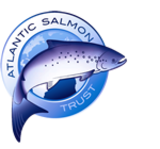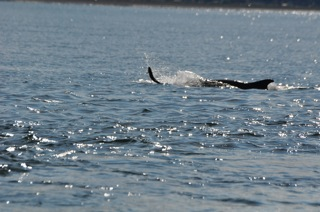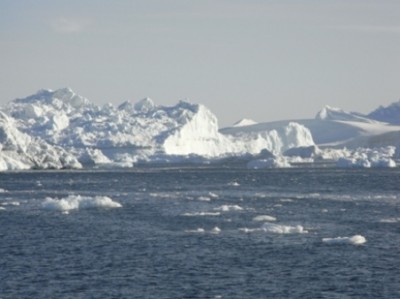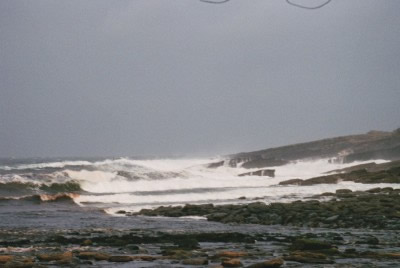NEW YEAR BLUES
There is no point in concealing the hard truth that the wild Atlantic salmon is in danger of extinction, at the very least in its southern range. Already the species is virtually extinct from USA. In the 1970s, Bay of Fundy rivers in Canada had runs of 40,000 salmon annually: they now have less than 200. Portuguese rivers no longer have salmon and the rivers of Galicia and Asturias are on the edge, as are the rivers of southern France, despite heroic efforts by fishery managers.
Rivers such as the Dorset Frome and other English South Coast rivers are already feeling the effects of climate change, as are many un-shaded upland streams further north, in the Dee and Spey catchments in Scotland, for example.
If we are to face the reality of our changing environment we need to deal directly with the issue of the collapse of wild Atlantic salmon stocks.
We must face the question, “is extinction of the species inevitable?” If the answer is “yes”, then, what is the timescale? And what can be done to delay that inevitability, and for how long?
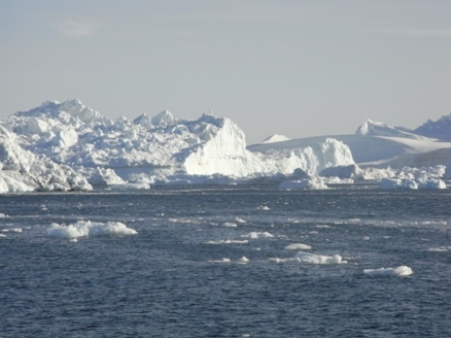
The best of the feeding for our 2 & 3 sea winter salmon is along the west coast of Greenland where this photography was taken by TA in June 2011. Rich feeding for salmon may be severely reduced as ocean warming squeezes the areas where cold water planktonic species thrive. There are underpinning natural cycles such as the North Atlantic Oscillation which changes on a cyclical basis every thirty years or so. It is possible that we are about to witness such a change, the result oif which could be improved feeding areas for salmon i9n the northeast Atlantic Ocean.
If the answer is “No”, can we give the wild salmon time & space for its natural resilience to kick in? and what are the priorities for redressing damage to stocks already done, and protecting stocks under threat, or likely to be so?
2014 – the current status of wild Atlantic salmon stocks.
Anyone with an interest in the species will be aware of the last two years of low catches in the North Atlantic countries, with the notable exception of Russia’s Kola Peninsula. Early returns indicate that 2014 catches in North America, Iceland, Norway, Ireland and the UK were considerably lower than the five year average.
As with most issues in the natural world, the situation is more complex than might at first appear. For example, MSW salmon returning to some Scottish and Irish east coast rivers between February and May arrived in reasonable numbers and were in excellent condition. The Irish River Slaney, for example, had its best spring returns for thirty years, with most fish in prime condition and with average weights of 12lbs to 15lbs. A similar spring season was enjoyed by rods on the Scottish rivers, Tay, North Esk and South Esk. All these fish were caught and returned, while coastal netting of salmon was delayed until April.
In contrast, there is evidence that extreme flooding in the wake of Hurricane Bertha reduced juvenile density considerably in some Scottish upper catchment tributaries. Angling conditions in many North Atlantic seaboard rivers were not conducive to high-catch returns. Grilse returns in European salmon countries were at best variable, in some cases virtually non-existent. Much of this had been predicted by marine ecologists, notably at the Institute of Marine Research, Bergen.
Ecological indicators tell us that the trend of improving spring runs may continue, ‘all things being equal’, by which I am referring to prevailing weather conditions, including drought, extreme flooding, high energy oceanic weather events and rising sea temperatures. Environmental volatility, which is largely unpredictable, can have profound effects on migrations at sea, as well as on freshwater productivity. It is not surprising therefore that some freshwater managers are saying, “there is clearly nothing we can do to improve the situation at sea, so let’s concentrate our efforts on improving the river environment”
The picture is a mixed one, so what are the facts at our disposal? Where are the ‘choke points’ in the life of the wild Atlantic salmon? Can we prioritise threats to survival in terms of the a) seriousness of the risks they pose to salmon survival b) ability of human interventions to increase numbers of returning salmon?
Can human intervention make any difference at all to mitigate the effects of climate change on salmon stocks at sea?
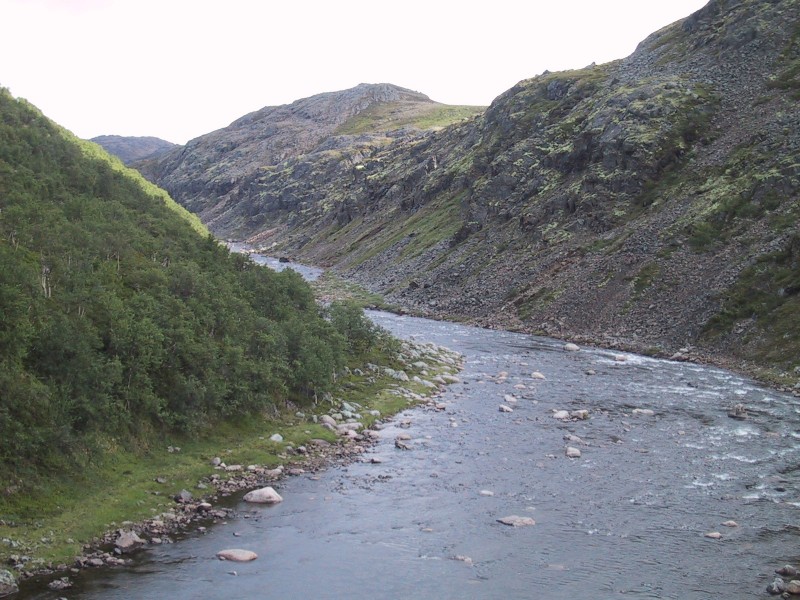
This photograph is of the River Sidirovka in Russia’s Kola Peninsula. Although it is a fairly small river (about the size of the Scottish Gruinard) it has prolific runs of MSW early salmon, grilse and sea trout – with arctic char and a few hump-backed salmon as well. It is a fine river for two rods to fish from the lakes on the plateau to the estuary on the shore of the Barents Sea. Kola salmon continue to do well despite the continuing downturn in numbers of returning salmon elsewhere in the North Atlantic region.
Here are some facts & anthropogenic factors:
• Numbers of wild Atlantic salmon at sea have declined by more than 60% between 1970 and 2014, and are now extinct in more than 300 North Atlantic seaboard river catchments.
• For every wild Atlantic salmon in the sea, there are more than 200 farmed Atlantic salmon in open net cages, ‘sharing’ the same coastal waters. Recent scientific research indicates that impacts of parasites, pollution and disease from salmon farming on the coastal environment and wildlife may be far greater than previously assessed, and may even affect migratory salmonids much further away than the immediate locality of the salmon farm.
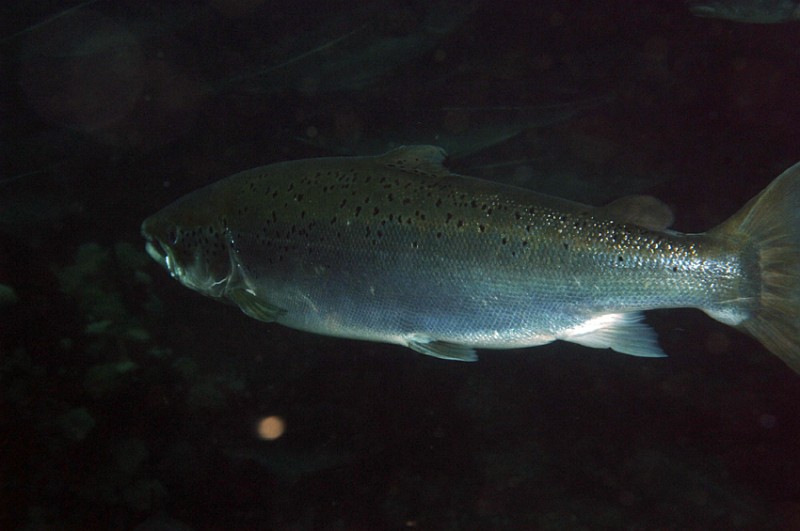
Spring salmon
• Despite international pressure to put an end to mixed stocks drift and coastal netting, and the continuing decline in killing salmon by anglers, the number of wild salmon killed by human exploitation in the bio-region remains too high for a species under pressure of extinction.
In 2013 for example, one Scottish coastal mixed stocks net fishery killed 7,159 salmon and grilse, while the total number of salmon killed by nets and fixed engines in England and Wales in the same year was 24% above the average of the previous five years.
• The SALSEA project demonstrated that wild Atlantic salmon swim alongside and within shoals of horse mackerel and herring. We therefore know for certain that some salmon, at different stages of their marine phase, are being accidentally caught up in the nets of commercial trawlers. We now need to know the extent of that by-catch, as well as where and when it takes place.
If it is found that the impacts on wild Atlantic salmon stocks are significant, AST will use its position as a full Executive Committee member of the EU’s Pelagic Advisory Council (PELAC) to influence fisheries policy in the direction of salmon conservation.
TA
